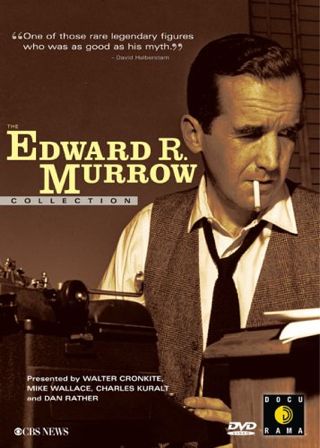Summary
A towering figure in radio and television, Edward R. Murrow is a name still whispered in reverent tones. He established the standards for broadcast journalists, and, when television was in its infancy, brought hard-hitting investigating reporting to prime time. In his inaugural broadcast of the seminal news magazine series, "See It Now", a television version of his radio series "Hear It Now", Murrow spoke of the new medium's potential to "illuminate and explain." He recognized the importance of television, and shared his hopes "to use it, and not abuse it." The "Edward R. Murrow Collection" is eloquent testimony to Murrow's impeccable legacy. The first disc, "This Reporter", is Murrow 101, with highlights from his legendary career and praise from the likes of Ted Koppel, Barbara Walters and a pre-Memogate Dan Rather. "The Best of "See It Now"" offers a representative sampling of some of this series' finest hours. The technology may be primitive (that inaugural broadcast featured the then-unprecedented miracle of a live coast-to-coast transmission, with twin images of New York's Brooklyn Bridge and San Francisco's Golden Gate), but the stories remain compelling. Among them: race relations from the perspective two southern small towns; a Christmas visit with American soldiers in Korea; profiles of Louis Armstrong and artist Grandma Moses; and flying into the eye of a hurricane.
"The McCarthy Years" chronicles the fall of a demagogue. In these dramatic and controversial broadcasts, Murrow used McCarthy's own words to expose his reckless abuse of power, and, in the story of disgraced Air Force lieutenant Milo Radulovich, put a human face on the "epidemic of fear" that was McCarthyism. The final disc contains "Harvest of Shame", a television benchmark. Broadcast the day after Thanksgiving, this "1960 "Grapes of Wrath"" exposed the agonizing plight of migrant farm workers. "We used to own our slaves," one farmer is quoted. "Now we just rent them." This indispensable set will hopefully serve as inspiration for budding journalists, and a reality check for network news executives. "--Donald Liebenson"


